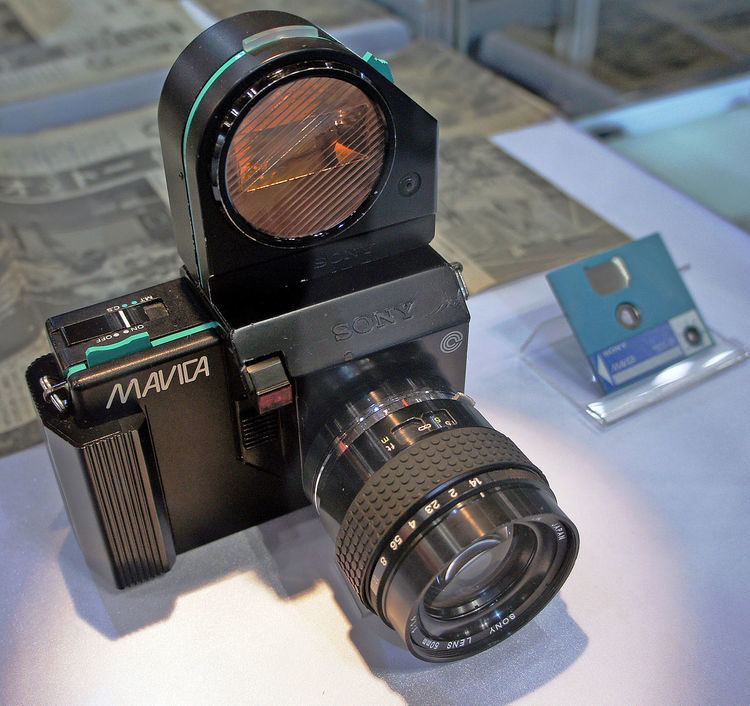 | ||
Mavica (Magnetic Video Camera) was a brand of Sony cameras which used removable disks as the main recording medium. In August 1981, Sony announced the Sony Mavica as the world's first electronic still camera.
Contents
- Features
- Later Sony Digital Cameras
- Still video cameras with storage on 20 video floppy
- Digital still cameras with storage on 35 floppy disk
- Digital still cameras with storage on 8 cm compact disc
- MaviCap digital still image capture adaptors
- Cameras of similar concept
- References
It was not a digital camera, as its CCD sensor produced an analog video signal in the NTSC format at a resolution of 570 × 490 pixels. Mavipak 2.0" disks (later adopted industry-wide as the Video Floppy and labelled "VF") were used to write 50 still frames onto tracks on disk. The pictures were viewed on a television screen. Otherwise, this camera is positioned as the "pioneer of the digital era".
The unreleased original MAVICA as well as the later ProMavica MVC-5000 and MVC-7000 were designed as single-lens reflex systems with interchangeable lenses. At least the ProMavica MVC-7000 also featured lens mount adapters for Nikon and Canon lenses. The VF format soon evolved into the backward-compatible Hi-VF format, supported by the ProMavica MVC-7000 and the Hi-Band Mavica models.
Features
The later Digital Mavicas recorded onto 3.5" 1.4 MiB 2HD floppy disks in computer-readable DOS FAT12 format, a feature that made them very popular in the North American market. With the evolution of consumer digital camera resolution (megapixels), the advent of the USB interface and the rise of high-capacity storage media, Mavicas started to offer other alternatives for recording images: the floppy-disk (FD) Mavicas began to be Memory Stick compatible (initially through a Memory Stick Floppy Disk adapter, but ultimately through a dedicated Memory Stick slot), and a new CD Mavica series—which used 8 cm CD-R/CD-RW media—was released in 2000.
The first CD-based Mavica (MVC-CD1000), notable also for its 10× optical zoom, could only write to CD-R discs, but it was able to use its USB interface to read images from CDs not finalized (CDs with incomplete sessions). Subsequent models are more compact, with a reduced optical zoom, and are able to write to CD-RW discs.
A couple of the models were formed with a single lens reflex component combined with an interchangeable lens. And to give them flexibility, one or two versions also had lens mount adapters.
Later Sony Digital Cameras
The Mavica line has been discontinued. Sony continues to produce digital cameras in the Cyber-shot and Alpha series, which use Memory Stick and other flash card technologies for storage.
Still video cameras with storage on 2.0" video floppy
Digital still cameras with storage on 3.5" floppy disk
Digital still cameras with storage on 8 cm compact disc
MaviCap digital still image capture adaptors
Cameras of similar concept
There were other digital cameras that used disk storage as memory media.
